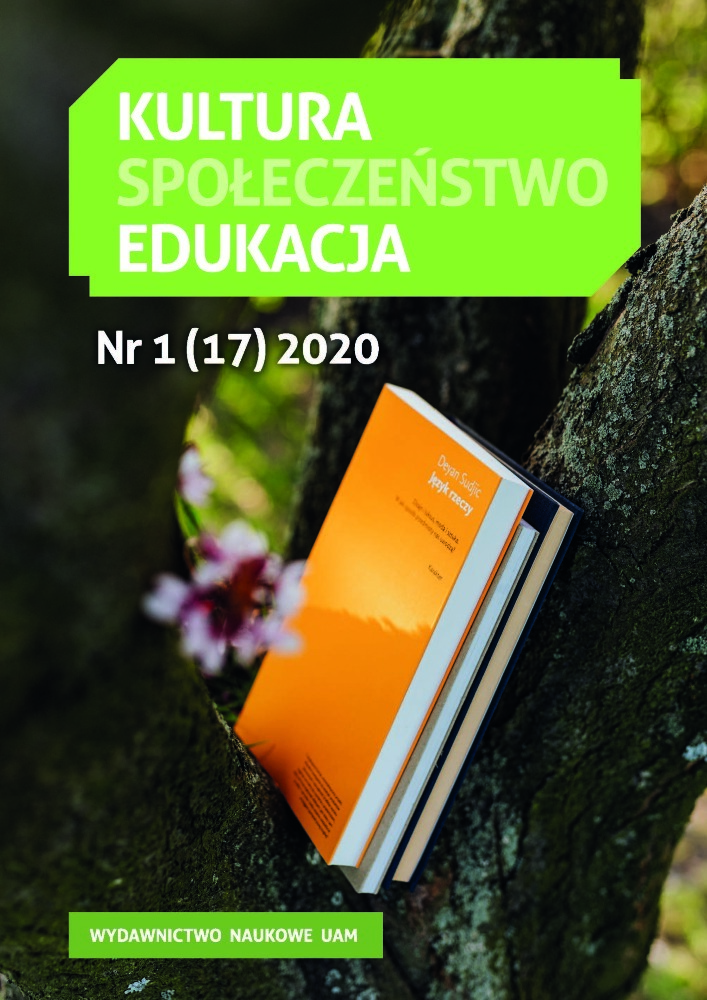Abstrakt
Although many changes have occurred and accumulated significantly in Arab society in Israel and in the majority-minority relationship, the great class gap between Arabs and Jewish has been retained. This gap depends on the division of the resources in Israeli society. Inequality in this division and in the social relations between Jewish and Arabs continues, although there are indications that it is lessening. It is difficult to speak about co-existence and peace between Jews and Arabs, since today the Arabs of Israel are integrated in Israeli society primarily by negative and involuntary forces, such as economic dependency, political heresy, and social ecological isolation (Smooha, 2011: 13). The present research focuses only on the Muslim Arab population integrated into the security forces in Israel.
Bibliografia
Abraham Fund Initiative (2011), http://www.iataskforce.org/entities/view/71.
Abu Amer A. (2018), Decline in the Percentage Supporting Coexistence Between Arabs and Jews in Israel, https://arabi21.com, accessed: 8.03.2018.
Abu Asba H., Hason S. (2004), Jews and Arabs in Israel versus a Changing Reality: Problems, Trends, Scenarios, and Recommendation, Jerusalem.
Abu Asba H., Rian-Jara N., Abu Nasra M. (2013), Mental treatment in Arab Society in Israel: Between tradition and modernity, society and welfare, Quarterly of Social Work 34 (1), pp. 101–121.
Al Khateeb A. (2012), Data and Attitudes Regarding the National Civil Service of Arab Citizens in Israel, Jerusalem.
Amara M., Schnell I. (2004), Identity repertoires among Arabs in Israel, Journal of Ethnic & Migration Studies, (30), pp. 175–193.
Carchavi-abach M. (2009), The Basis of the Organization of the Hamula (Clan) and the Status of the Arab Woman, Tel Aviv.
Gidley B., Ali S. (2014), Advancing Outcomes for All Minorities: Experiences of Mainstreaming Immigrant Integration Policy in the United Kingdom, Brussels.
Haj Yehia N. (2006), Couplehood and parenting in Arab Society in Israel: Process of, Doctoral Dissertation, Haifa.
Haltiner K.W. (1997), The Definite End of the Mass Army. An empirical analysis of the Western European armed forces at the end of 1990s, Zurich.
Hammad M. (2011), Israeli Peace – The Settlement Strategy, Beirut–Lebanon.
Hativ H. (2003), Report – State Committee for the Clarification of the Clashes between the Security Forces and the Citizens of Israel in the Month of October 2000, Tel Aviv.
Hoppe H. (2007), Democracy the God that Failed: The Economics and Politics of Monarchy, Democracy, and Natural Order, New Brunswick–London.
Ilievski N. (2015), The Significance of the Concept Multi-speed Europe as a Model for the Political Integration of the European Union, Bitola.
Jamal A. (2005), On the Patterns of the Establishment of National Inequality in Israel, Society and Economy in Israel: A historical and contemporary look, Jerusalem.
Kanaaneh R.A. (2008), Surrounded: Palestinian soldiers in the Israeli military, Stanford.
Kanaaneh R.A. (2005), Boys or men? Duped or made? Palestinian soldiers in the Israeli military, The American Anthropological Association, pp. 1425–1548.
Khoury A. (2013), Palestinians in Palestinian Cities in Israel: A Settler Colonial Reality, Jadal, pp. 18.
Kone S. (2011), Is Economic Integration between Developing Countries a Singular Process? Sejong.
Kugelmann D. (2007), The protection of minorities and indigenous peoples respecting cultural diversity, Max Planck Yearbook of United Nations Law, The Netherlands, 11, pp. 233–263.
Kuran T., Sandholm W. (2007), Cultural integration and its discontents, The Review of Economic Studies, vol. 75 no. 1, pp. 201–228.
Levin Freeman Y. (2011), To Grow Up and Be Gendered: The Emergence of the Paternal Identity among Youths, Tel Aviv.
Lvova E. (2004), Integration of the Ukraine to the World’s Economic System by Means of Special Investment Regimes, Hamburg.
Marshal S., Adams G. (1996), A Developmental Social Psychology of Identity: Understanding the Person-In-Context, National Library of Medicine, 19(5), pp. 429–42.
Nikolov S. (1996), Integration of the Ethnic Minorities in the Bulgarian Armed Forces, Sofia.
Prelec M., Rashiti N. (2015), Serb Integration in Kosovo after the Brussels Agreement, BPRG Balkans Policy Research Group, Government of Switzerland & Government of Norway, https://www.academia.edu/17310893/Serb_Integration_in_Kosovo_After_the_Brussels_Agreement.
Raya M. (2014), Life after Divorce: The Experience of Educated Muslim Arab Women, Haifa.
Reches A. (1993), The Arab Minority in Israel: Between Communism and Arab Nationalism, Washington.
Reches A. (2002), The Elections for the 16th Knesset among the Arab Citizens in Israel: Program for the Research of Arab Politics in Israel, Washington.
Rodinski A. (2014), The Arab Citizens of Israel at the Beginning of the 21st Century, Tel Aviv.
Salman R. (1990), The forgotten: Arab Palestine – 1948 – the stage of recovery from shock, Journal of Palestine Studies 1(2).
Sbatah A. (2015), What You Do Not Know about Arab Soldiers Working in the Israeli Army, https://www.sasapost.com/arabs-israel-army/.
Schafferman K. (2008), Arab Identity in a Jewish and Democratic State, Jerusalem.
Schaub G., Praden-Blach F., Larsen E., Larsen J. (2012), Diversity in the Danish Armed Forces, Copenhagen.
Smooha S. (2003), Relations between Arabs and Jews, Journal of Citizenship in Israeli Society, 1(1).
Smooha S. (2010), Arab-Jewish Relations in Israel – Alienation and Rapprochement, Washington.
Smooha S. (2010), The Lost Decade of Arab-Jewish Relations: A Review of Index Findings between 2003 and 2009, Haifa.
Smooha S. (2010), Measure of Jewish-Arab Relations in Israel for the Year 2010, Tel-Aviv–Jaffa.
Smooha S. (2011), The National Civil Service for Arabs in Israel, Haifa.
Stein N. (2013), Development – a fight between modernity and traditionalism?, hiiDunia: Broading Global Development Discourse, http://www.hiidunia.com/2013/02/development-a-fight-between-modernity-and-traditionalism/.
Suan A. (2008), Arab Muslim, http://www.politicsdaily.com/2010/05/29/soccer-racism-and-israelsunlikely-world-cup-hero-abbas-suan/.
Wattad M. (2011), I believe: Israeli Arabs – lost in a sea of identities, Beijing Law Review 2(1), pp. 1–7.
Yanakiev Y. (2006), Transforming the Bulgarian Armed Forces and the Challenges of Diversity in the Context of Modern Human Resources Management Policy Development, Sofia.
Licencja
Prawa autorskie (c) 2020 Kamleh Abu Ismail-Hassan

Utwór dostępny jest na licencji Creative Commons Uznanie autorstwa – Bez utworów zależnych 4.0 Międzynarodowe.

